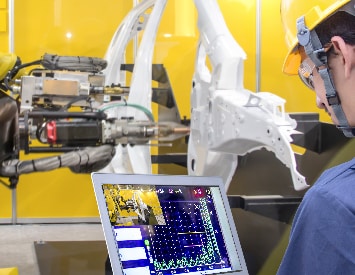In the renewable energy industry, a single component malfunction can significantly impact the entire network’s performance.
Asset failures in solar and wind farms can bring down a whole network of infrastructure, affecting thousands of customers and decreasing network reliability, costing hundreds of thousands of dollars. Therefore, there is a strong imperative to predict and avoid malfunctions in such highly connected systems.
Sophisticated reliability models using new Machine Leaning (ML) techniques are proving to be a game-changer for asset performance management.
Data and artificial intelligence are being used to predict malfunctions at any future point in time and facilitate the shift to condition than time-based maintenance. Early detection and more precise information can indicate which components or equipment will need to be repaired or replaced and when. This is allowing asset managers to plan maintenance efficiently and avoid unplanned and expensive disruptions.
In this paper, we outline how machine learning (ML), combined with industry expertise, can estimate the probability of failure for specific failure modes and components.
The methodology illustrates a specific failure mode using a large wind farm case study, where a significant number of component failures occurred within a short space of time.
The problem is solved using a two-step solution, firstly predicting the future probability distribution of a parameter given its current value, and secondly, determining the probability of the malfunction given the predicted parameter value. This allows a standardized and more accurate approach for prognosticating malfunctions of technical components, thus determining their remaining useful life (RUL).
The estimated RUL of the component is robust as it is based on probabilities for the malfunction of the component at a number of future points in time.
Machine learning algorithms are also used for temperature forecasting to closely and continuously monitor the gearbox health status.
A Holt-Winters model has been used for the purpose of forecasting and it shows more accurate results compared with other models.


